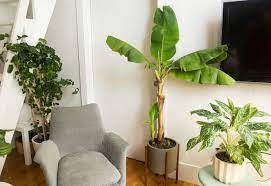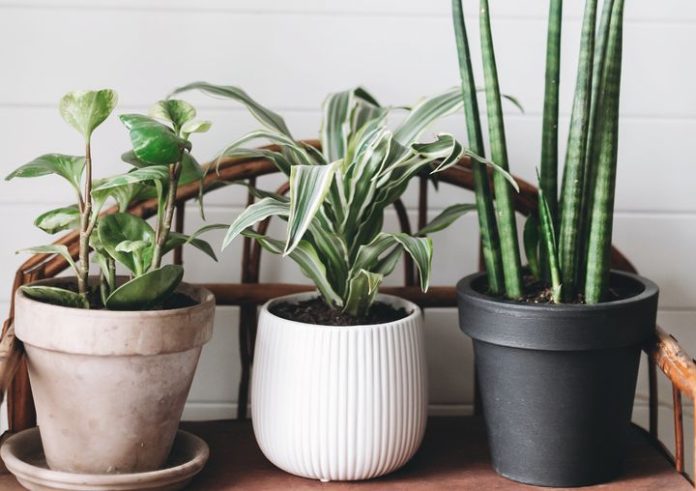Plants are well known to boost our minds and conduct life in our space; they can also do that. They are necessary for cleansing the air and linked to our entire health. However, if you do not have any plants in your house, you may consider adding indoor plants that clean the air and remove toxins.
According to NASA research, indoor air impurity is a threat to our health, and the separation of plants and microorganisms is just a contributing cause to many health problems. visit here
Indoor air impurity comes from a variety of sources, together with toxic emissions such as toluene, xylene, trichloroethylene, formaldehyde, and benzene, which can affect our health. Toxins are often found in areas where there is no air circulation, such as offices and homes. Let us talk about some of the best indoor plants that clean the air and remove toxins.
Table of Contents
Indoor plants for health
We spend most of our time indoors, so the quality of indoor air is the highest priority. A 1989 NASA study on air pollution found that certain houseplants can decrease indoor air impurity, including formaldehyde. Good news for those who love indoor plants. A recent study in the Journal of Epidemiology counted that as indoor plants refine the air. They gradually make significant changes.
Do houseplants clean the air?
Way back in 1980, Stennis Space Center of NASA’s John C. discovered that indoor plants could take off formaldehyde from indoor air.
Another joint study of NASA saw that 12 conventional indoor plants could emit toxins like formaldehyde, trichloroethylene, and benzene into the inside air. These refer to volatile compounds, VOCs that are found in abundance in the inside air due to gas emissions.
After that, NASA created a “house” to trial their theory. The human-made structure has completely stopped and gas chemistry. It is a big problem according to scientific research and clinical evidence.
Do houseplants generally have other health effects?
During the lockdown of COVID-19, many people decided to infect their hands for gardening. However, are there any kind of health benefits from it?
The scientists examined 323 learners and found that indoor plants are associated with an “outside” sensation that is a natural presence.
Although the advantages of plants for cleansing the air are uncertain, The latest study from the UPF found that gardens are helpful for both mental and physical health. Another study published in Physiological Anthropology of Adolescents found that growing a home garden reduced stress response from the need to work at a computer. Sitting before a laptop and asking to do a task. The researchers observed elevated heart rate, stress, and blood pressure that were not present in any team in the field.
Why is it necessary to buy indoor plants
Most people know plants are important for air; however, we may not know the reason. It all depends on a method called photosynthesis that you may have learned in school. In this way, plants can absorb and release carbon dioxide from the air, converting it into oxygen. Some say plants take out other toxins of the air accordingly!
The air purification system of indoor plants.
The indoor plant plays an important role in keeping a healthy living environment by removing Co2 from the environment, absorbing viscose and volatile organic mixes like formaldehyde, benzene, and so many. These plants also have several options for removing air from the river. The large growth variation of plant species is often linked to the figure of leaves, leaf hairs, etc.
The most manifest thing to do is to keep parts of plants like flowers or leaves. The second method is sucking the tips of the leaves, tears. The third method is to increase the tension in the stoma when the tension is less and passes through the stomach. When the fungus takes hold of the plant cells in this pore, a violent bump occurs, and then tension is created by the spreading of the leaves.
Negative effects of inner air pollution
Most inside air pollution comes from releasing gases or dirt into the wind. Daily human activity typically results in air pollution from tobacco gases, cigarette smoke, pesticides, liquids, detergents, dust, wires, mold, and other chemicals. The results of inner air pollution extend from short-term effects like itchy eyes and throat to long-term payoffs like respiratory diseases. Some pollutants, like carbon dioxide, can cause sudden death. The results of inner air pollution may be serious and are associated with a variety of side effects, such as
- Payne-Builder syndrome: This covers a set of symptoms like pain in the eyes, nose, and throat. Headache; Exhaustion; Difficulty; sadness; Asthma, skin and gastric problems.
- Construction-related diseases like pneumonia and Legionnaires’ disease
- Acute respiratory disease
- Lung and heart conditions.
Some indoor plants that clean the air and remove toxins
Banana Plant
The banana plant may grow indoors for their large leaves, which means they have plenty of room to absorb toxins and release clean oxygen into your breath.
Bananas can be used as room wind purifiers because they take off formaldehyde, which most recent building materials produce when exposed to heat or to sunlight.

In general, the size of this type of wing varies between 1.5 and 3 meters in length. Leaves may grow to 2 feet or more when mature, making them ideal for home cultivation with lots of room around near windows or corners.
Aloe vera
Aloe vera plant is a water-based natural remedy that can purify indoor wind as well. This succulent plant grows well in cloudy situations and has shown to be useful in removing benzene and formaldehyde, two of the biggest toxins in the air from the air.
A leafy cactus with a leaf thickness of about 713 cm can release 1,555 mg of formaldehyde into the wind in 24 hours.
You can’t just use aloe vera as an air purifier, as it only detoxifies benzene and formaldehyde. Increases other air pollutants to kill viruses, bacteria, ammonia, trichloroethane, and allergens.
Ficus Alii
Ficus Alii grows easily indoors and is resistant to most insects, effectively removing moisture from the air. It prefers moist and full or mid sun, although it can tolerate little light. The optimum heat range is up to 65°F and 85°F.
Ficus Alii can not be placed near ducts or openings, or streams, as this can cause leaf loss. The soil should always be moist, but allow it to dry out between waterings. If your tree’s leaves are turning yellow, it could indicate that there is too much water.
During active plant growth, fertilizer can be applied every two months. Make sure your fertilizer does not have pores because the elements can easily attack the plant. Also, remember that ficus Alii is toxic and should be kept off pets and small children.
In tropical climates, Ficus Alii grows like an evergreen tree. However, when grown indoors as a pot plant, Ficus Ali will grow to 10 meters tall.
Fern Plant
Environmentalist BC How the Wind Wolverton Design Fern as an Excellent Plant Helps Remove Formaldehyde in Your Home. In addition to purifying the air, ferns are hardy plants that do not require special care, which creates them popular among beginners. To keep your flowers, it is best to area them in a mark with indirect sunlight, as the flowers will grow in their natural environment under the shade of the tree. It may water several times to keep the soil damp. Ferns are also non-toxic, which makes them the best houseplants for pet owners.
Boston Fern
A study by Dr. Wolverton found the Boston fern, the tallest of all herbs tested, for its capacity to take off formaldehyde. With formaldehyde in each thing, from trash bags to wipes, face masks, wrappers, and labels to cigarettes and gas stoves, which emit these chemicals, the Boston fern is even smarter. Whether at home or in the office.
Boston ferns are four feet tall and five feet wide. It has a winged fence that looks great, like a hanging tree or a vase on the ground. He likes a world that is cooler, brighter but with less direct light and is always on the alert.
When the tree drops new leaves, give a liquid, compound fertilizer every week. Eat sparingly in winter. Do not let the Boston fern balls dry out. Humus-rich soil meets the plant’s requires and helps ensure it doesn’t need to be watered every day.
Boston fern prefers to put a smaller one in a bowl and then put it in a larger bowl when their roots begin to emerge from the well or when water flows directly into the bowl. Sowing is best ready in spring when the plants begin to grow again. The best temperatures in Boston are 65 to 75 F at night.
Rubber Plant
Rubber plants are very effective at taking off formaldehyde from the inner air. It has been popular since the Victorian time; it grows well indoors and can tolerate temperatures up to 40 °F for a short time. The optimum temperature is 60-80 F.

Although rubber plant prefers half an hour of sunlight rather than a little shade, they can tolerate less, which makes them more prolific. However, avoid straight sunlight, mainly in summer. In a dry, moderately warm room, beware of heavy insects, thrips, and spider mites. Rubber plants that grow anywhere from two to five feet tall may also require balanced support.
Water the soil abundantly from mid-summer to autumn, let the soil dry before watering again. Do not get too wet in winter. This plant does not tolerate excessive watering.
Choosing process of Indoor Plants for Cleaning Indoor Air
Before buying new plants to improve the air quality in your home, here are some things to keep in mind:
- Think about the level of illumination in your house or consider buying LED lights to keep it healthy.
- Consider rescuing your pets and children who may be injured.
- Some plants may look like your decorations, but remember to think about their needs and appearance.
- Almost all of these flowering plants require some form of artificial light to grow.
- Look for trees that are resistant to dry air in your living room and bedroom, but do not forget that wetness-loving plants are great for bathrooms.
Conclusive Discussion of Indoor Plants that Clean the Air and Remove Toxins
At the end of this article, we hope you know how indoor plants that clean the air and remove toxins. If you want to know anything just inform us, we will always be ready for you.








